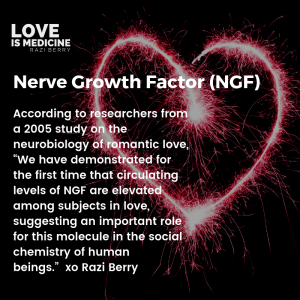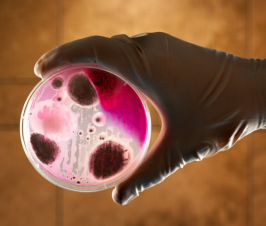I’d been hit!And then everything went silent; Love at first sight
It’s 1988 and just past lunchtime on campus of my suburban high school. My jeans probably had zippers on the ankles and my bangs were probably curled under and fluffed. I was probably wearing puffy sleeves. The final bell began to ring and I was darting into the 100 building to avoid a tardy in Mr Hull’s algebra class. Mr Hull was exasperated by me because although I possessed a strong analytical mind, I let math frighten me. He would say that If I exerted the same energy on solving the problems that I did in arguing against the methods to get there, that I could teach the class instead of being terrified by it.
Maybe I skipped this class sometimes. As class president, I sometimes got away with it.
The last bell chimed and I swung open the door right into Mr Hull’s pensive gaze. I swiveled around him toward my seat hoping to avert his comments when POW!
I’d been hit!
And then everything went silent.
Yes, we were very young, but love is love, and we were inseparable those 4 years.
The next time it happened was a decade later. I had been ill. The last thing I was looking for was love. But he quietly walked past me and instantaneously I knew him, I loved him.
Love at first sight.
We didn’t date until several months later, but I went home and told my father I had seen the man I would marry.
And marry we did. That cupid’s arrow gave us 5 miscarriages, 2 daughters and 14 years together.
Do you believe in love at first sight?
Research says it’s real.
In 2010, researchers from Syracuse University published a study called “The Neuroimaging of Love.” It quickly gained global attention.
In the study, it was revealed that falling in love not only causes the same blissful high commonly associated with cocaine, but that falling in love can happen in one-fifth of a second.
The meta-analysis took a deep look into the brain by examining a wide range of studies which delve into the brain’s networks associated with various aspects of love. From encompassing passionate love relationships to others like maternal love and unconditional love for disabled individuals.
Love at First Sight: A Chemical Cocktail Released in the Brain During the Initial Stages of Attraction
Research has found 12 different areas of the brain work together and release a cocktail of euphoria-producing chemicals including oxytocin, dopamine, adrenaline, and vasopressin when a person is initially attracted to someone.
The release of this chemical cocktail in the brain can literally happen in less than a second. Try just one-fifth of a second, making the romantic notion of “love at first sight” one that just might have some scientific reasoning behind it.
A 2001 Gallup Poll revealed that over half of American adults believe in love at first sight and 60% of Americans between ages 18-29 believe you can fall in love when first laying eyes on someone. The poll also found that 4 in 10 Americans had first-hand experience in love at first sight.
Is Love at First Sight Really Love?
In 2017, researchers in the Netherlands set out to find out more about love at first sight. Almost 400 people (both men and women) completed surveys about possible romantic partners after their first meeting with that person.
Parts of the survey included:
- Reporting how physically attractive they found the individual
- How much sexual attraction they felt for the individual
- Agreeing to the statement: “I am experiencing love at first sight with this person”
Not only did they find that love at first sight is more commonly associated with attractive individuals, but also that it’s typically a one-sided thing.
One of the most compelling parts of the investigation suggested that love at first sight isn’t really love at all, but instead a strong initial attraction that makes a person feel as if they’re open to the possibility of a relationship with the object of their affection.
Love at First Sight: Euphoric Chemicals and Romantic Chemistry
This initial attraction that many people believe is actually love at first sight could be explained by the rush of chemicals that are released in the brain during the initial stages of attraction. The discovery that these euphoric chemicals associated with falling in love can release within one-fifth of a second sounds a lot like falling in love at first sight.
Nerve Growth Factor (NGF) and Falling in Love
 Aside from a release of feel-good chemicals like oxytocin and dopamine that are released when falling in love, researchers also found that there was also a significant increase in blood levels of nerve growth factor (NGF). Studies have shown that healthy levels of NGF have the potential to improve depression, repair the heart, possibly even preventing heart disease, support fertility, and more.
Aside from a release of feel-good chemicals like oxytocin and dopamine that are released when falling in love, researchers also found that there was also a significant increase in blood levels of nerve growth factor (NGF). Studies have shown that healthy levels of NGF have the potential to improve depression, repair the heart, possibly even preventing heart disease, support fertility, and more.
Researchers found the levels of NGF to be significantly higher in people who had just fallen in love, but there’s a catch. It doesn’t last for long.
According to researchers from a 2005 study on the neurobiology of romantic love, “We have demonstrated for the first time that circulating levels of NGF are elevated among subjects in love, suggesting an important role for this molecule in the social chemistry of human beings.”
The study found that men and women who had recently fallen in love had higher levels of NGF compared to those who were in long-term relationships (227 units vs. 123 units). Those with the most intense feelings for their new love had the highest levels of NGF. Within a year, however, these high levels of NGF decreased to similar levels of those in long-term relationships.
While researchers of the study were unclear of the exact role NGF plays when falling in love, they speculated that the psychological or behavioral qualities of falling in love could have to do with the high amount of chemicals released in the brain.
“The raised NGF levels when falling in love could be related to specific emotions typically associated with intense, early-stage romantic love, such as emotional dependency and euphoria,” researchers of the study reported.
Does Love at First Sight Really Exist? Or Is it All About What’s Happening in the Brain?
Research contends that the role NGF plays in falling in love “confirms love has scientific basis.” If love at first sight truly exists, it’s left up to those who have experienced it to decide.
While many claim they have experienced this coveted phenomenon, it may not be “love” they’re experiencing at all but rather a rush of chemicals that can make them feel as if the said person they laid eyes on really is someone they’ve instantaneously fallen in love with.
Remember, these chemicals are released in abundance in less than a second on those occasions of love at first sight, making it easy to associate what they’re feeling with falling in love. To fall in love instantly is one thing. To sustain this love over time is quite another. Some research suggests that love at first sight isn’t love at all, but rather a strong initial attraction.
In fact, there are actually different stages of love that show different areas of the brain at work in each stage. The chemicals released when a person first falls in love are far different from the chemicals associated with people in long-term relationships.
There is, however, basis for the idea of love at first sight, and researchers believe that what they’ve discovered can serve for further research in the areas of neuroscience and mental health. We all know that when relationships don’t work out, it can feel devastating and lead to the “love-sickness” almost everyone has felt after a particularly difficult breakup.
“It’s another probe into the brain and into the mind of the patient. By understanding why they fall in love and why they are so heartbroken, they can use new therapies,” say experts.
Another concept of the phenomenon of love at first sight could be our magnetic sense. Magnetoreception is the ability to perceive magnetic fields, and something many experts believe could be our primal “sixth sense.” When experiencing love at first sight, are we energetically detecting a mate through the chemosignaling that takes place when detecting a person’s own energetic biofield and the energy contained within their heart?
According to experts from the HeartMath Institute, “The heart generates the largest electromagnetic field in the body. The electrical field as measured in an electrocardiogram (ECG) is about 60 times greater in amplitude than the brain waves recorded in an electroencephalogram (EEG).”
Emotional information is encoded into these electromagnetic fields, and through chemosensing (a molecular recognition that can detect signals or changes) we could be “sensing” that a person’s individual energy resonates with our own.
Pheremones also play a large role in initial attraction of a potential mate. These scent markers that are contained in human perspiration are widely known to rule sexual attraction and behavior. Is love at first sight simply a combination of these various chemical and electrical pulses that are produced physiologically? Or is it really love?
By examining these different physiological facets and their role in falling in love, it’s easier to determine if these feelings are truly love or just a psychophysiological process that occurs when meeting someone we’re attracted to.
Do you agree?
Think about the first time you held your child. You loved them instantly and for a lifetime. Many physicists argue that time is an illusion. At least when it comes to love, I tend to agree. Do you?
To learn more about the physiology of falling in love and more topics like it, please join me on Facebook at Love is Medicine, where we take a deeper look at the science of love (and more) and how a better understanding can help us create vibrant physical and emotional health each and every day.
Sources:
https://www.ncbi.nlm.nih.gov/pubmed/20807326
https://news.gallup.com/poll/2017/over-half-americans-believe-love-first-sight.aspx
https://onlinelibrary.wiley.com/doi/abs/10.1111/pere.12218
https://www.ncbi.nlm.nih.gov/pmc/articles/PMC4389916/
https://www.ncbi.nlm.nih.gov/pmc/articles/PMC4550513/
https://www.ncbi.nlm.nih.gov/pubmed/16289361
 Razi Berry is the founder and publisher of the journal Naturopathic Doctor News & Review, which has been in print since 2005, and the premier consumer-faced website of naturopathic medicine, NaturalPath. She is the host of The Natural Cancer Prevention Summit and The Heart Revolution-Heal, Empower and Follow Your Heart, and the popular 10 week Sugar Free Summer program. From a near death experience as a young girl that healed her failing heart, to later overcoming infertility and Chronic Fatigue Syndrome and Fibromyalgia through naturopathic medicine, Razi has lived the mind/body healing paradigm. Her projects uniquely capture the tradition and philosophy of naturopathy: The healing power of nature, the vital life force in every living thing and the undeniable role that science and mind/body medicine have in creating health and overcoming dis-ease. Follow Razi on Facebook at Razi Berry , join her Love is Medicine group to explore the convergence of love and health, and find more Love is Medicine podcast episodes here.
Razi Berry is the founder and publisher of the journal Naturopathic Doctor News & Review, which has been in print since 2005, and the premier consumer-faced website of naturopathic medicine, NaturalPath. She is the host of The Natural Cancer Prevention Summit and The Heart Revolution-Heal, Empower and Follow Your Heart, and the popular 10 week Sugar Free Summer program. From a near death experience as a young girl that healed her failing heart, to later overcoming infertility and Chronic Fatigue Syndrome and Fibromyalgia through naturopathic medicine, Razi has lived the mind/body healing paradigm. Her projects uniquely capture the tradition and philosophy of naturopathy: The healing power of nature, the vital life force in every living thing and the undeniable role that science and mind/body medicine have in creating health and overcoming dis-ease. Follow Razi on Facebook at Razi Berry , join her Love is Medicine group to explore the convergence of love and health, and find more Love is Medicine podcast episodes here.

















